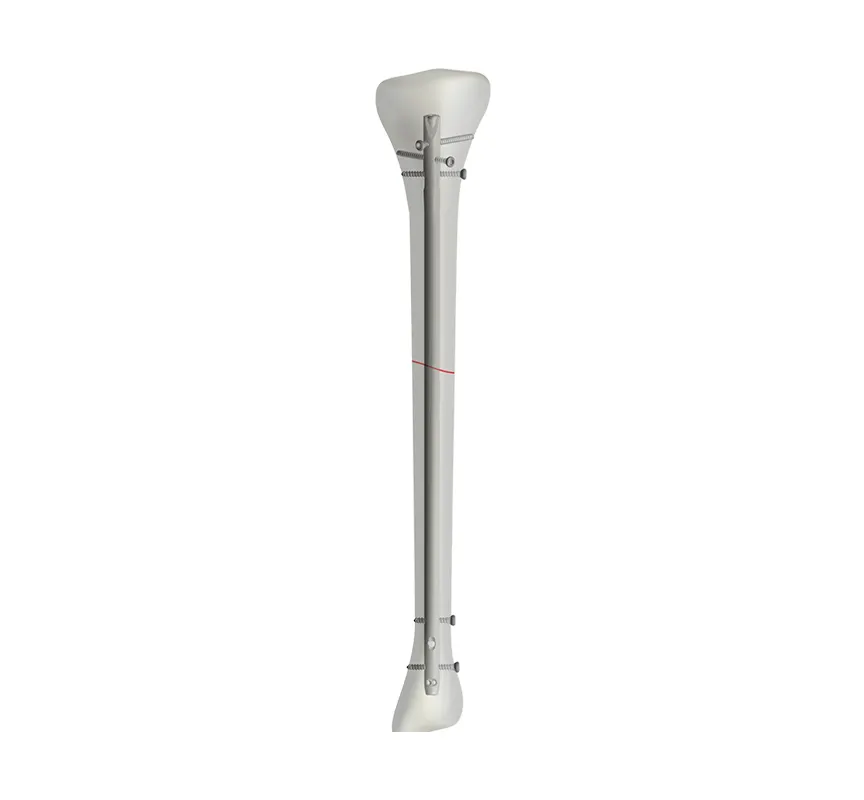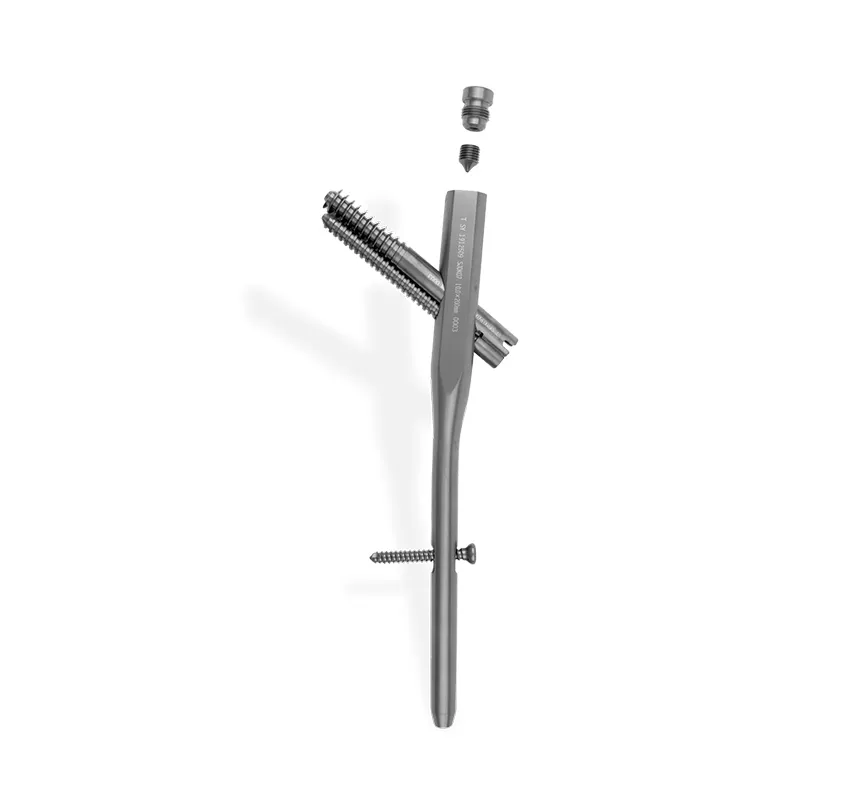Understanding the Role of Orthopedic Implants in Modern Medicine
Advancements in medical technology have significantly improved the way we treat injuries and degenerative conditions. Among these breakthroughs, the orthopedic implant stands out as a crucial tool for restoring mobility and improving quality of life. These devices are designed to support or replace damaged bones, joints, or cartilage and are widely used across various medical conditions. From trauma care to chronic joint degeneration, orthopedic implants play a pivotal role in modern surgical interventions.
Trauma and Fracture Repair
Severe Bone Fractures
One of the most common reasons for using an orthopedic implant is the treatment of severe bone fractures. When bones are broken in multiple places or are misaligned, natural healing may be compromised. Orthopedic implants such as plates, screws, and rods help realign and stabilize the bone, enabling it to heal properly. These devices are especially useful in complex fractures resulting from car accidents, sports injuries, or high-impact trauma.
Non-Union and Malunion Fractures
In cases where fractures fail to heal (non-union) or heal improperly (malunion), an orthopedic implant can be critical in correcting the issue. Surgeons may use bone plates or intramedullary nails to stabilize and encourage proper healing. These implants ensure that the affected bone segments are held securely in the correct position for optimum recovery.
Joint Degeneration and Replacement
Osteoarthritis
Osteoarthritis is a leading cause of joint degeneration that often necessitates the use of an orthopedic implant. When the cartilage in joints wears down due to age or repetitive stress, patients experience pain and limited mobility. Total joint replacement, involving orthopedic implants such as artificial knees or hips, offers a reliable solution to restore function and alleviate discomfort.
Rheumatoid Arthritis
Rheumatoid arthritis, an autoimmune condition that affects joints, can cause significant joint deformities and damage. In advanced stages, orthopedic implants are often used to replace or reconstruct the affected joints, especially in the hands, wrists, and elbows. These implants help improve joint alignment and function.
Spinal Disorders
Spinal Fusion Procedures
Orthopedic implants are widely used in spinal surgeries, particularly in spinal fusion procedures. These surgeries aim to stabilize and support the spine by fusing two or more vertebrae. Implants such as rods, screws, and cages provide the necessary support to facilitate bone growth and reduce movement at the fusion site.
Degenerative Disc Disease
Degenerative disc disease can lead to chronic back pain and spinal instability. In such cases, orthopedic implants like artificial disc replacements or spinal cages help restore stability and relieve pressure on spinal nerves. These implants play a vital role in maintaining spinal alignment and motion.
Congenital and Developmental Conditions
Skeletal Deformities
Children born with congenital skeletal deformities, such as scoliosis or limb length discrepancies, often require surgical intervention involving orthopedic implants. These devices help correct the deformity and promote proper bone growth. Early intervention with the right implant can significantly improve a child’s mobility and quality of life.
Developmental Dysplasia
Developmental dysplasia of the hip (DDH) is another condition where orthopedic implants can be beneficial. When detected early, treatment may include the use of plates or screws to realign and stabilize the hip joint, ensuring proper development and function.

Sports Injuries
Ligament and Tendon Repair
Athletes are at high risk for ligament and tendon injuries, such as ACL tears or rotator cuff injuries. Orthopedic implants, including anchors, screws, and fixation devices, are used to secure soft tissues during surgical repairs. These implants support the healing process and restore joint stability.
Cartilage Restoration
Cartilage damage, especially in the knee or shoulder, may also require the use of orthopedic implants. Procedures such as microfracture surgery or osteochondral grafting often involve the use of specialized implants to support cartilage regeneration and maintain joint integrity.
Bone Tumors and Reconstruction
Tumor Resection
In cases of bone cancer, surgical resection of the tumor often results in significant bone loss. Orthopedic implants such as modular endoprostheses are used to reconstruct the affected area. These implants restore both the form and function of the bone, allowing patients to regain mobility.
Limb Salvage Surgery
Limb salvage procedures aim to preserve the affected limb by replacing the diseased bone with an orthopedic implant. This is an important alternative to amputation and provides a functional and aesthetic benefit for the patient. These complex surgeries rely heavily on the precision and durability of orthopedic implants.
Elderly Patients and Fragility Fractures
Hip Fractures
Hip fractures are a common injury among the elderly due to osteoporosis and falls. Orthopedic implants such as hip screws, plates, or prosthetic joints are essential in stabilizing the fracture and facilitating early mobility. Quick surgical intervention with implants significantly reduces complications and improves recovery.
Vertebral Compression Fractures
Osteoporotic compression fractures of the spine are another condition frequently treated with orthopedic implants. Procedures such as vertebroplasty or kyphoplasty involve the use of cement and implantable devices to stabilize the spine and relieve pain.
Pediatric Orthopedic Applications
Corrective Surgeries for Growth Disorders
In pediatric orthopedics, implants are used to correct limb length discrepancies or angular deformities. Growth modulation techniques involve the use of plates or rods that guide bone development over time. These implants help ensure balanced growth and prevent long-term complications.
Traumatic Injuries in Children
Children with traumatic injuries, such as broken arms or legs, may also require orthopedic implants for proper healing. Pediatric-specific implants are designed to accommodate growing bones while providing the necessary stability and support.
Post-Traumatic and Revision Surgeries
Failed Fixation
Sometimes, initial fracture fixation may fail due to poor healing or implant failure. In such cases, revision surgery using a different orthopedic implant may be necessary to restore function. Surgeons carefully evaluate the situation and select the most appropriate implant for a second attempt.
Joint Revision
Joint replacements may wear out over time or develop complications such as loosening or infection. Revision surgeries involve replacing the existing implant with a new one to restore joint integrity and function. These procedures require advanced orthopedic implants tailored to the patient’s specific needs.
Technological Innovations in Orthopedic Implants
3D Printing and Custom Implants
The use of 3D printing in orthopedic implant design allows for custom-made devices that fit the patient’s anatomy precisely. This innovation enhances surgical outcomes and reduces recovery time. Custom implants are especially useful in complex or rare conditions.
Smart Implants and Monitoring
Smart orthopedic implants equipped with sensors can provide real-time data on healing progress, load distribution, and implant performance. These devices offer surgeons valuable insights and allow for more personalized post-operative care. The integration of technology continues to transform the orthopedic implant landscape.
FAQ
What are the most common types of orthopedic implants?
The most common orthopedic implants include plates, screws, rods, pins, and prosthetic joints. Each serves a specific function based on the condition being treated.
Are orthopedic implants safe and long-lasting?
Yes, orthopedic implants are made from biocompatible materials and are designed to be durable. Many implants can last 10-20 years or more, depending on use and patient factors.
Can orthopedic implants be removed after healing?
In some cases, implants may be removed after complete healing, especially if they cause discomfort or are no longer needed. However, many are designed to remain in the body permanently.
Do orthopedic implants cause allergic reactions?
Allergic reactions to implants are rare. Most are made from materials like titanium or stainless steel, which are well tolerated by the body.
Table of Contents
- Understanding the Role of Orthopedic Implants in Modern Medicine
- Trauma and Fracture Repair
- Joint Degeneration and Replacement
- Spinal Disorders
- Congenital and Developmental Conditions
- Sports Injuries
- Bone Tumors and Reconstruction
- Elderly Patients and Fragility Fractures
- Pediatric Orthopedic Applications
- Post-Traumatic and Revision Surgeries
- Technological Innovations in Orthopedic Implants
- FAQ
 EN
EN
 FR
FR
 ES
ES
 AR
AR

